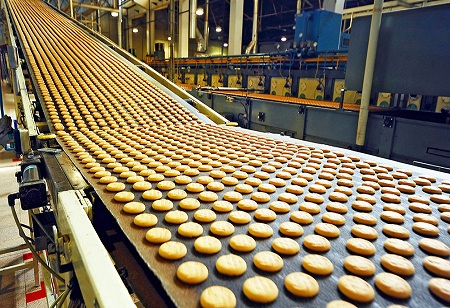
The food and beverage industry is persistently evolving, driven by consumer demand for healthier options, sustainability initiatives, and novel technologies such as Third-Party Delivery Services, Self-Serve Kiosks and Tablets, and Menu QR codes to name a few. For instance Menu QR codes enables customers to scrutinize nutritional information and ingredient lists for each menu item. They also allow customers to access allergy information, allowing them to make well-versed decisions while placing orders. In addition, QR codes can be used to propose customers with discounts or loyalty rewards. Companies are now progressively focusing on sustainable initiatives. This will help minimize waste production by eliminating the need for printed menus. It will in fact contribute in easing up the environmental impact of the restaurant industry. Their focus is now gradually shifting on creating products that can be prepared swiftly and effortlessly. Furthermore, plant-based proteins are on the rise as more people look for meat alternatives.
Some of the latest trends to look out for -
A third-party delivery service allows restaurants to present their food to an extensive customer base without having to invest in their own delivery infrastructure. This minimizes the overall costs associated with catering to delivery services. It assists in optimizing the restaurant's environmental footprint. For case in point, a restaurant can use a third-party delivery service to deliver their food to customers within a 50-mile radius, which eliminates the need for the restaurant to purchase and maintain their own delivery vehicles. In addition, plant-based proteins require less energy and resources to produce than meat, making them a more sustainable option. Restaurants can capitalize on this by investing in more plant-based proteins and offering them as part of their delivery menus. This can help them appeal to a larger, more health-conscious customer base and reduce their environmental impact.
Customers can make the use of self-service kiosks and tablets to place orders, eliminating waiters and waitresses. This will cut down the labor costs and free up staff to focus on more critical tasks. Additionally, it will cut down on human errors and reduce customer wait times. By automating the ordering process, customers will be able to find menu items faster, view nutritional information and customize orders more easily. This will help improve customer satisfaction as orders will be more accurate and delivered faster. Additionally, it will increase efficiency as staff will have less time-consuming tasks to complete and can focus on more pressing matters. Automating the ordering process will also save time and money as it eliminates the need for manual data entry and reduces the overhead costs associated with paperwork. Furthermore, it will streamline inventory management and decrease food wastage, resulting in higher profits for the restaurant. For instance, automated ordering systems can easily track each item’s shelf life and alert the restaurant when certain items are reaching their expiration date, allowing them to adjust their ordering process accordingly.
Employing QR codes on the menu, customers can now place their orders straight from their phones without having to wait for staff to feed it manually. This will optimize the chance of errors and streamline the order-taking process, leading to faster delivery times. Moreover, this mechanism will free up staff to focus on delivering the orders sooner, providing customers with efficient service. Furthermore, it gives customers a more modern and convenient way to place their orders, which in turn leads to better customer satisfaction. This system could also generate more accurate sales reports, which will help to identify customer preferences and inform future decisions. For instance, the sales reports could show which items are being ordered together frequently, allowing the business to better pair items for promotional offers.
The smart kitchen technology caters to the restaurant staff with the ability to track inventory in real time, enabling them to accurately assess current supplies and foresee potential needs. This increased efficiency could lead to cost savings and enhanced customer service. By tracking inventory in real time, restaurants are able to order the exact amount of supplies they need without over or under ordering. This reduces the amount of waste and allows them to ensure that they always have the ingredients they need on hand. This not only saves money, but it also improves customer satisfaction by optimizing wait times. For instance, with real-time inventory tracking, a restaurant can quickly identify when they are low on a particular ingredient and order more without having to wait or risk running out.
Thus, to sum it all up, several cutting-edge trends like this are altering the way businesses administer their operations. Vasu Naren, Managing Director and CEO of Sona Machinery in an article published in BW Disrupt magazine portal says – ‘Sustainability is the most cutting-edge movement that has ever sparked advancements in food science and technology.’ In the same article, he further adds that ‘there is a pressing need for the quick development of a variety of sustainable alternative protein food technologies, including precision and biomass fermentation, 3-D printing, enzymatic and molecular biology techniques, and CRISPR-Cas9 genome editing.’ All of these combined, businesses in the food and beverage industry can leverage a competitive edge and stand out in the market.
We use cookies to ensure you get the best experience on our website. Read more...